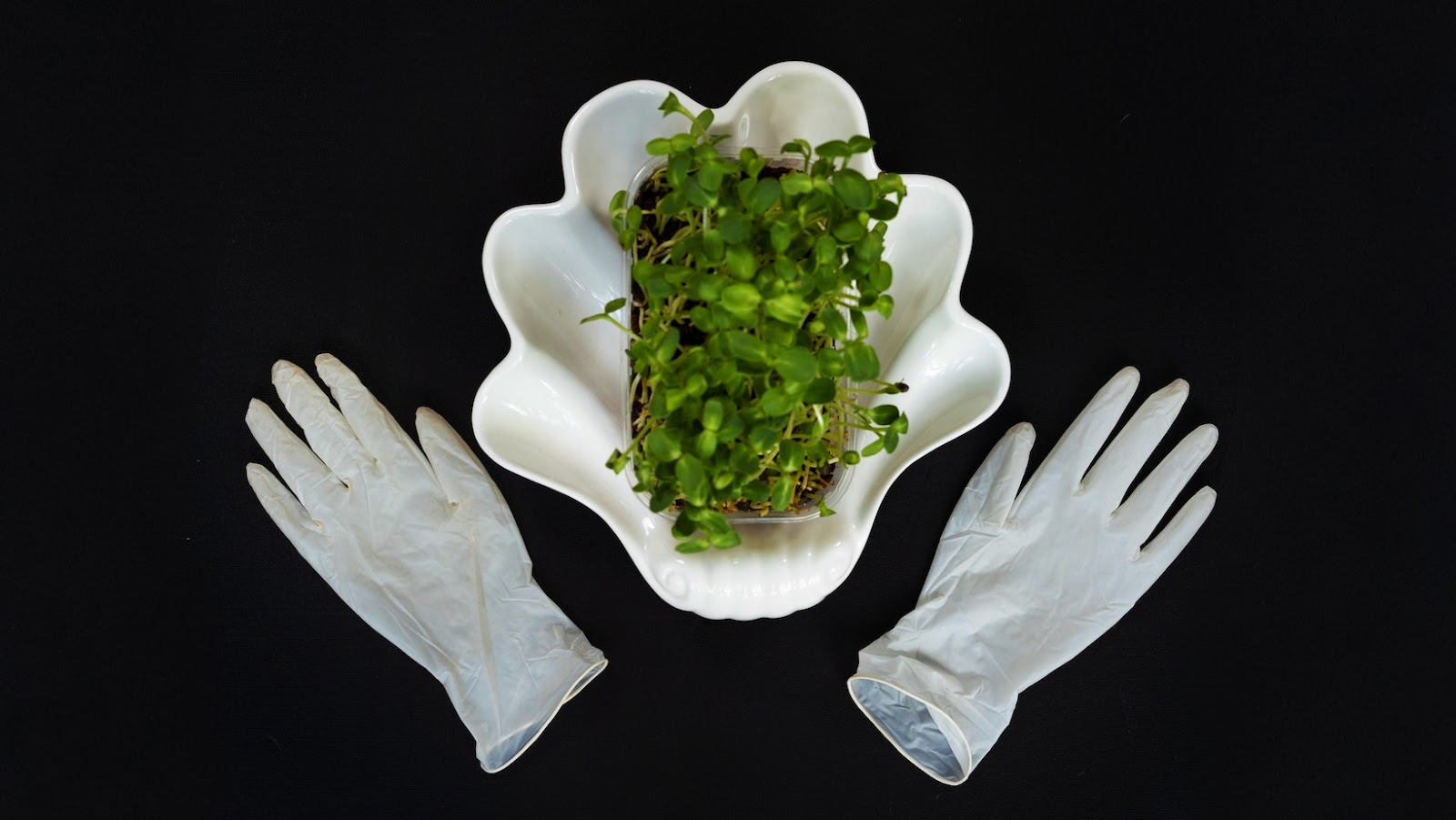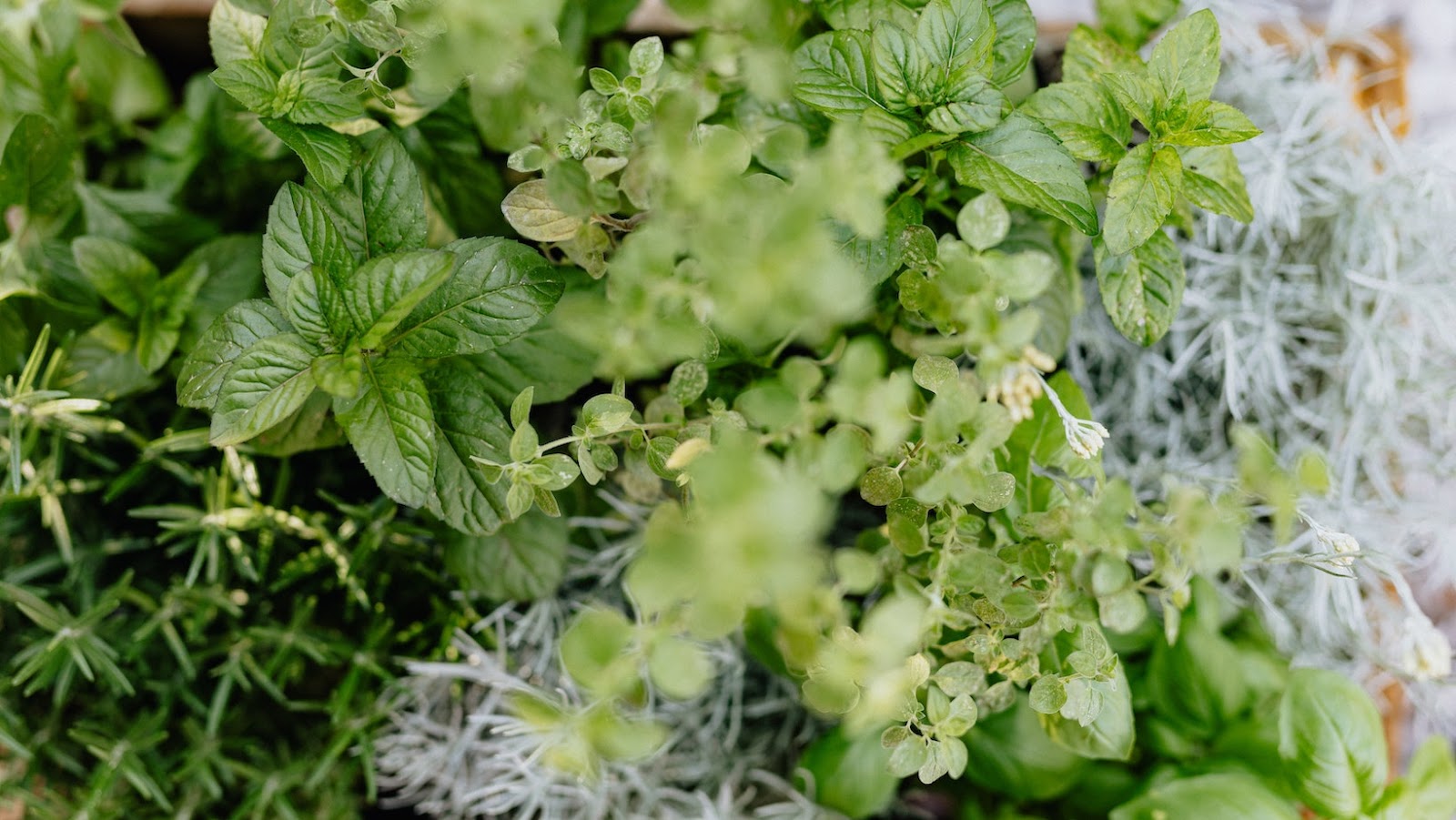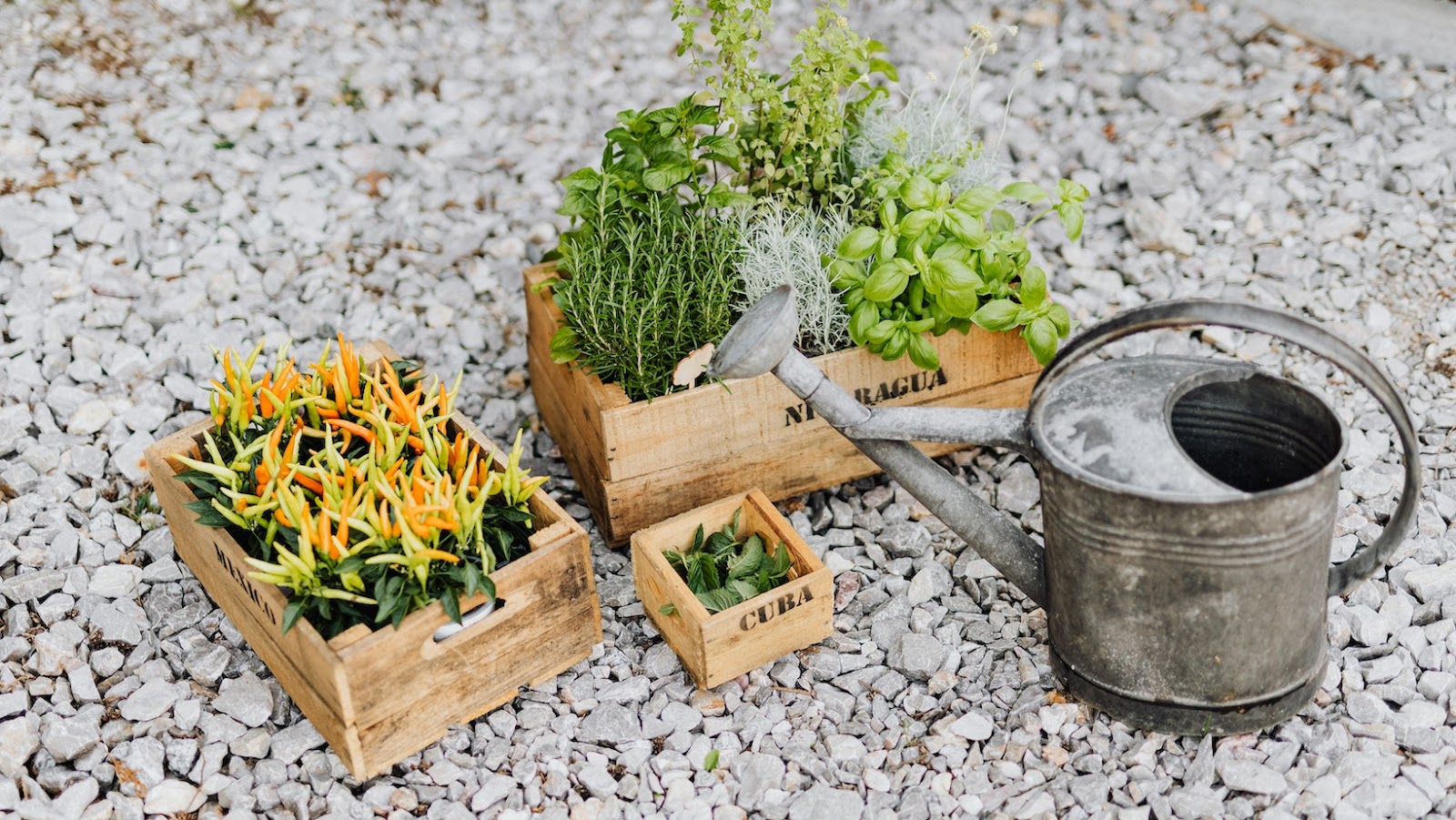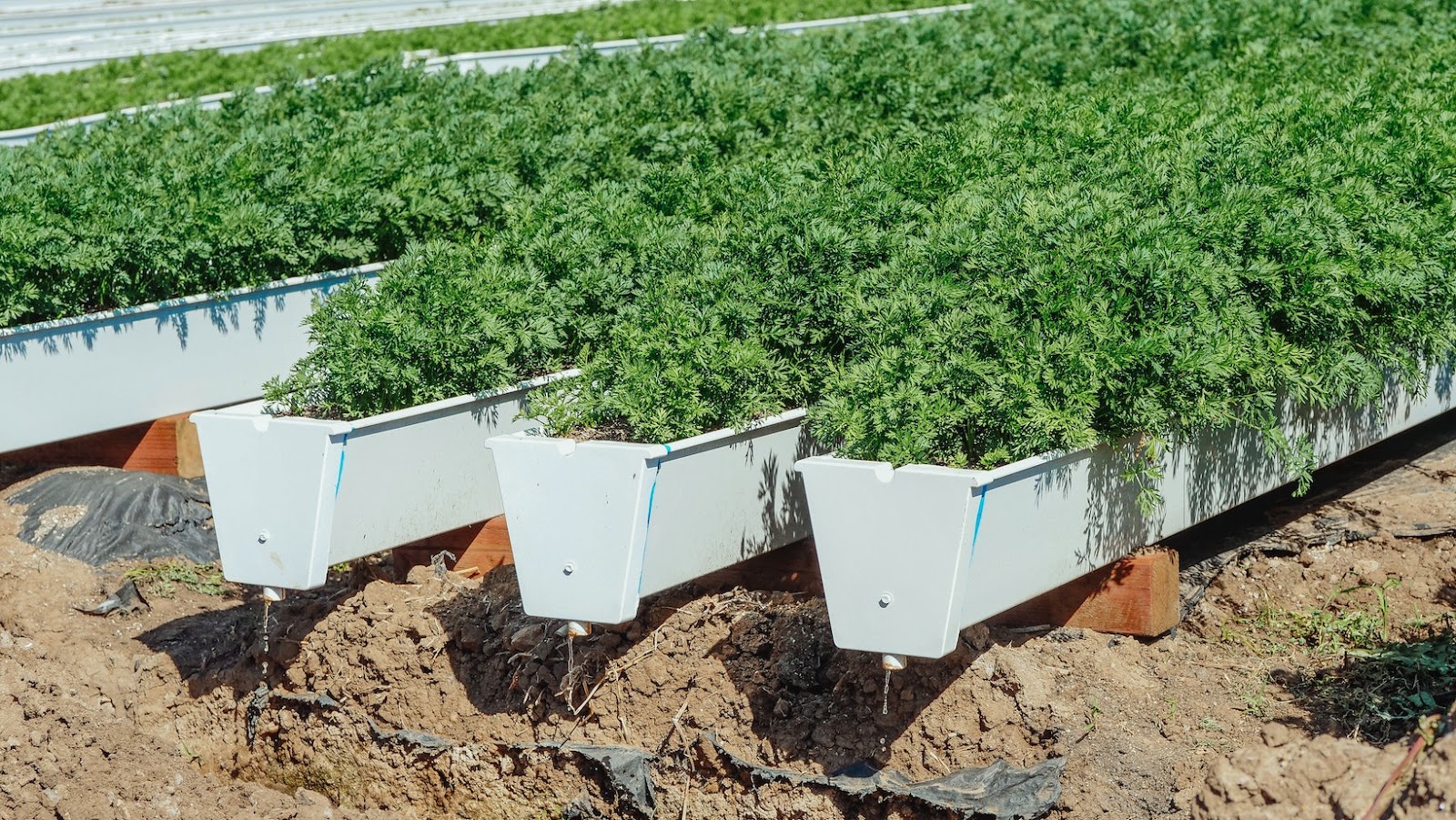Herbs grouped can amp up growth and boost yields. Here are six combos to try:
- Rosemary, thyme, and sage – plant these three together as they need similar conditions.
- Cilantro, dill and parsley are great buddies – they hold moisture and work well together.
- Basil and tomatoes are a great match – plant side by side to bring out the flavors.
- Lavender and chamomile are like a natural pair – group them for better nutrients.
- Mint is a great pest repellent. Plant with chives or coriander for a pesticide-free garden.
- Lemon balm next to anything – lemongrass, geraniums or tomatoes – helps repel bugs and pollinates flowers.
For even more success:
– Choose herbs with different properties that support each other.
– Learn about each herb’s specific needs (sun, soil). Grouping plants with different needs may affect their growth.
Herbs planted alongside veg create diversity, reduce disease, and stop pests. So why wait? Create a buzzing, aromatic, harmonious herb garden! It’s like a herb dating app – find the right match!
Pairing Herbs Based on Companionship
Pairing Herbs According to Beneficial Relationships
There are various reasons to pair herbs – to prevent diseases, improve soil health, or attract pollinators. In addition to the popular companionship, certain herbs should not be planted together. Mint, for instance, is a prolific grower that suffocates other herbs, so it’s best to plant it separately.
Also, herbs in the same family, such as cilantro and fennel, can cross-pollinate and produce poor-tasting leaves.
To ensure a thriving herb garden, check the compatibility of herbs before planting. Furthermore, be mindful of their placement according to their required amount of sunlight and soil type.
Don’t miss out on the benefits of herb pairing! Make sure to research and plan your herb garden accordingly. Companion planting is like Tinder for herbs, finding the perfect match for a flourishing garden.
Benefits of Companion Planting
Planting herbs based on companionship has lots of perks! It reduces the need for pesticides, increases yield, encourages beneficial insects and pollinators, saves soil moisture, and upgrades soil fertility. Also, it minimizes pests, diseases, and weeds – keeping the ecosystem healthy.
Furthermore, companion planting can boost biodiversity in the garden. Selecting plants that work well together and have different blooming periods or root systems creates an ideal environment for different plants and animals.
A study by Washington State University’s Extension Master Gardener Program revealed that companion planting supports crop yields in sustainable agriculture.
Knowing which herbs help each other grow is essential. Incorrect pairings may reduce their yield or harm their health, so knowing which plants work well together is essential to produce a flourishing herb garden. Bug spray? Nah! Herbs are the real pest control.
Herbs that Repel Insects and Pests
Exploring herbal buddies? It’s key to look at these plants’ influence on keeping away insects and pests. A few herbs have unique characteristics that make them ideal natural repellents – no dangerous compounds needed!
5 Herbs to Repel Insects & Pests:
- Peppermint: aphids, ants, beetles, fleas, moths and spiders.
- Lavender: fleas, flies, mosquitoes and moths.
- Lemongrass: mosquitoes and ticks.
- Basil: flies and mosquitoes.
- Chives: aphids, Japanese beetles and carrot flies.
Also, certain mixtures can boost pest-repelling power. For example, peppermint and hyssop strategically planted together, can increase the efficacy of both plants in warding off pests.
Ensure these herbs get the right amount of sun and water for maximum impact. Don’t miss out on their bug-banishing benefits – put them in your garden now! It’s like giving your soil a total transformation.

Herbs that Enhance Soil Fertility
Incorporating Herbs to Boost Soil Fertility
Healthy soil is key for a successful garden. Introduce herbs with natural benefits that enhance fertility!
- Comfrey contains nitrogen, potassium & phosphate, great nutrients for other plants.
- Tansy secretes essential oils that destroy soil pests.
- Borage grows fast and stimulates flower growth of neighbors.
- Stinging Nettles are a great source of nitrogen & iron for compost tea.
- Mint enriches scent and flavor, deterring pests like aphids & whiteflies.
- Yarrow helps enhance other plant growth & optimizes nutrient content.
Make sure the herbs are compatible when planting them together! They attract certain species of insects or animals for pollination.
The University of California conducted a study on Ecological Pest Management. It suggested adding herbs to existing crop rotation to ward off pests naturally.
In short, adding suitable herbs to your crops boosts soil biotic activity. This will result in luscious yields and bounty harvests! So plant these herbs together and watch them grow.
Herbs that Enhance Flavor and Growth
For a tasty twist in your garden, pair herbs together! Basil goes great with tomatoes, peppers and beans, while deterring pests. Mint complements cabbage and tomatoes, plus it repels slugs. Oregano enhances garlic, onions and peppers, and it’s a natural bug repellent. Thyme pairs well with eggplant, potatoes and strawberries, and keeps pests away. Lavender is perfect with sweet peppers and different types of berries and supports root health.
Avoid fennel though, as it inhibits the growth of other plants near it. Experiment with different combinations for a unique experience. Add depth to your garden produce with the right pairings – select herbs wisely for the best results. Feel like a rebel? Spice it up by pairing sweet and savory herbs together!
Pairing Herbs Based on Contrasting Qualities
Pairing Herbs with Contrasting Qualities for Optimal Garden Growth
Different herbs have unique qualities that complement or clash with each other. Strategic pairing of herbs can lead to a healthy and thriving garden.
Unique aromatic qualities also play a role in herb pairings, as some herbs possess strong scents that may overwhelm others.
Don’t miss out on the potential benefits of herb pairing in your garden. Take the time to research and experiment with different herb combinations to achieve the optimal growth and flavor.
Spice up your garden and taste buds by combining sweet and spicy herbs for a flavor explosion that will leave your mouth watering and your neighbors jealous.
Which Herbs To Plant Together
A balanced and tasty dish must pair flavors with contrasting qualities. Here are some tips for combining sweet and spicy flavors and elevating your culinary experience!
- Start mild using honey or maple syrup and add paprika, cumin or chili powder for a hint of heat.
- Mix sugar, soy sauce and Sriracha sauce for a flavorful marinade that’s slightly sweet and spicy.
- Add fruits like mango or pineapple to dishes containing jalapeños or hot peppers – the sweetness will balance the heat.
- Pair spicy dips with sweet fruits like watermelon or cantaloupe – a refreshing combination.
- Mix honey mustard, garlic, mayo, and hot sauce for a yummy dipping sauce.
- Spice up pizzas by topping them with contrasting ingredients – like pineapple chunks and hot pepper flakes.
Remember, finding the right balance is key! Kimchi is the perfect example of sweet and spicy fusion in Korean cuisine. It’s made with chili paste, Gochujang, and a mixture of sugar, molasses, honey, or syrup. And don’t forget to add some aromatic herbs for an extra flavor punch!

Mixing Aromatic and Neutral Herbs
Pairing herbs based on contrasting qualities is a great way to add depth and complexity to dishes. Here’s how to combine aromatic and neutral herbs:
- Aromatic herbs, like thyme and rosemary, have strong flavors for braised meats.
- Neutral herbs like parsley, coriander, and chives can balance out aromatic flavors.
- Start with small amounts of aromatic herbs and adjust gradually.
- Neutral herbs can be added at any time during cooking, while aromatics lose flavor if added too early.
- Mixing rosemary with parsley can bring out layers of flavor in roasted meat dishes.
To get the right herb pairing, consider flavors that work together and those that contrast, such as hot vs. cold, light vs. heavy. Experiment to find your own unique blend. And with proper care, mixing aromatics with neutrals can turn a simple dish into something special.
Finding the perfect balance between herbs that love water and those that don’t is like a relationship – it takes effort and trial and error.
Balancing Moisture-Loving and Drought-Resistant Herbs
Matching Herbs? Balance Moisture Needs!
Identify which herbs need more water and which can tolerate dry soil. Plant moisture-lovers in self-watering pots or near a water source. For drought-resistant plants, ensure well-draining soil, enough space, and access to sunlight.
Maintain a consistent watering schedule for both types. Avoid overwatering – it harms drought-resistant plants and attracts pests and diseases.
Consider other factors like sunlight exposure, growth habits, and compatibility when grouping herbs. Pro Tip: Add mulch around the base of each plant to help regulate soil moisture levels. Vertical gardening – high-grow and low-grow herbs – is pun-tastic!
Planting High and Low-Growing Herbs Together for Optimal Use of Space
Maximizing your garden space? High and low-growing herbs are the way to go! Place tall herbs at the back of the bed or container to let the shorter plants get the sun. Mix together contrasting textures and colors to bring extra visual interest and flavor. Prune regularly to keep everything healthy. Research growth rates and light requirements before planting. Find out which herbs prefer sun or shade. Include mulch to give extra nutrients and help with moisture. And don’t forget about spicing up your veggies and fruits with herbs!
Pairing Herbs with Vegetables and Fruits
Pairing Herbs with Vegetables and Fruits can lead to a thriving garden. Here are some pairings that can be used in creating a fruitful garden.
In the table below, we have listed the vegetables and fruits and their corresponding herb pairings. Planting them together will help enhance the taste and aroma of the crops and keep pests away.
Did you know that the concept of pairing herbs with vegetables and fruits has been around since ancient times? It was believed that certain herb combinations could help improve the taste and health of crops.
Mixing veggies with herbs? Sounds like a match made in companion planting heaven.
Companion Planting with Common Garden Vegetables
Pairing herbs with fruits and veg can make an awesome relationship. It can help protect against pests and improve nutrient absorption.
- Arugula: Enhance flavor and reduce aphids when paired with strawberries or tomatoes.
- Basil: Plant with tomatoes for more abundant yield.
- Dill: Repel spider mites and attract lacewings to deter aphids. Plant near cucumbers.
- Mint: Reduce cabbage and carrot pests. Perfect for these crops.
Healthier, more productive plants are the result of these herb combinations.
Ancient civilisations used companion planting techniques. For example, the Native Americans planted the ‘Three Sisters’. Beans, corn and squash, where each one gave something special. Corn supported beans, beans gave nitrogen to the soil which both corn and squash thrived in. The squash acted as a ground cover, shading the roots and deterring pests due to its prickly stem.
Surprising results when pairing herbs with fruit!

Pairing Herbs with Common Fruits
Herbs and fruits are a match made in flavor heaven! For six scrumptious combos, try thyme with strawberries, basil with peaches, mint with watermelon, rosemary with raspberries, sage with apples, and lemongrass with pineapple.
Keep sweetness and acidity in mind when choosing your herb-fruit pairings. Tart fruits like cranberries pair best with savory herbs, like thyme or rosemary, rather than sweet ones like basil.
For a tasty twist, experiment with different herb-fruit combinations. Don’t be afraid to give something new a go! With the right herbs and fruits, your dishes can go from basic to boujee in no thyme.
Conclusion: Creating a Thriving Garden with Smart Herb Pairings
For a flourishing garden, intelligent combinations of herbs can boost growth, flavour, and health benefits. Below is a table to help you decide the best herb pairings for optimal results. It considers soil, sun, water, and companion preferences.
Remember, some herbs enjoy specific companions. For instance, basil and tomatoes pair well due to their flavours and basil’s ability to repel tomato pests. Sage, on the other hand, works best with carrots as it prevents carrot fly infestations.
Additionally, be sure to keep dill and fennel separate as they dominate the area. Lastly, group similar herbs together for ideal environmental conditions.
Gardening success is yours!

